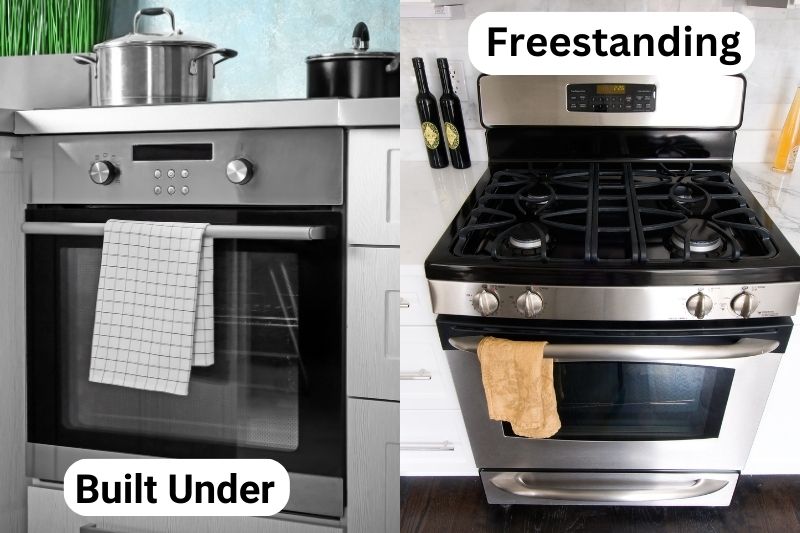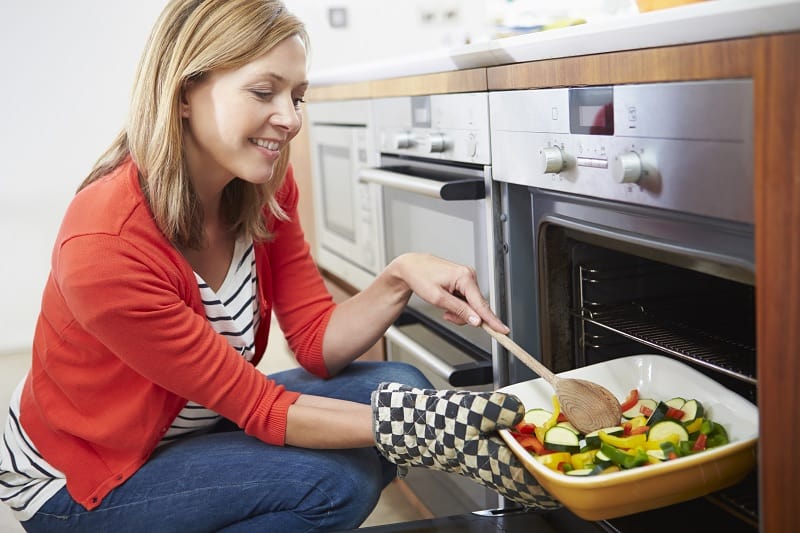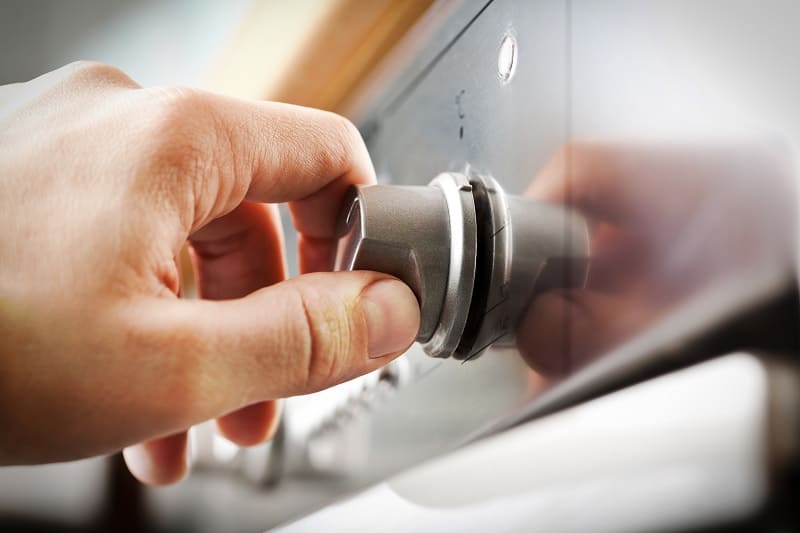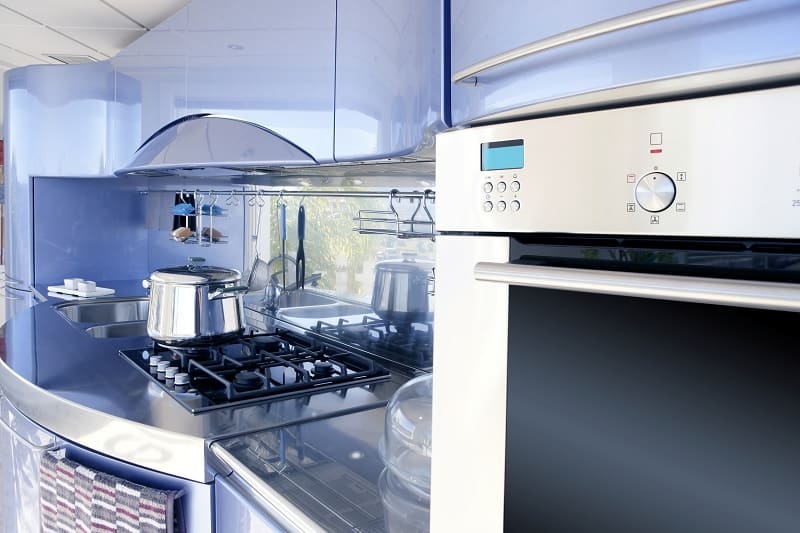During your quest to find the perfect oven for your kitchen, I am sure you have heard of the three types of oven that we are about to discuss.
But do you know what built-in, built under and freestanding ovens are? Do you know what benefits and drawbacks each of these ovens offer?
If you have found this oven article because you are confused as to which of these ovens are perfect for your new kitchen, or you just want to find the right replacement oven, stick around.
Let’s first talk about these ovens and find out exactly what each one is, shall we?
What Is a Built-In Oven?
Built-in ovens are integrated ovens that slot into your kitchen seamlessly. Your oven will slot into any place you’d like it to be, and then it will be surrounded with the wooden detailing that your cupboards are lined with.
So, if you want a very modern-looking kitchen, but still want an easy way of cooking, then a built-in oven is for you.
Having a built-in oven installed in your kitchen is much like having a range cooker (the oven part, anyway) installed into your wall.
Benefits
- Very modern
- The hob you choose can differ from the oven (could be induction or gas, for example)
- Flexibility to put your oven wherever you like
- Can be placed at any level for easy cooking
Downsides
- You will need to buy a separate hob
- Can be a bit more costly than a freestanding oven to repair
- Tricky to move once in place
What Is a Built-Under Oven?

A built-under oven is much like a built-in oven. However, unlike a built-in oven, a built-under is designed to go under your countertop.
The advantages of a built-under oven are that they can offer more style points to a kitchen than a freestanding oven.
However, they function the same as a freestanding oven. So, you will likely have the hob above a built-under oven, but it is isn’t essential.
So, I suppose the way to look at a built-under oven is that they are the best of both worlds. They can extend the design elements of your kitchen, but they still feel and work very much like a freestanding oven.
Benefits
- Added design elements (compared with a freestanding oven)
- The hob you choose can be different
- Slots neatly into the kitchen
Downsides
- Tricky to move once installed
- You’ll need to buy a hob too
So, those are the differences between these ovens and a few benefits and downside to each type of oven too. Now, you may be thinking “as built-in ovens, and built-under ovens are very similar, can one be used as the other?” What a great question. Let’s tackle that next, shall we?
What Is a Freestanding Oven?

A freestanding oven, in a nutshell, is a cooker that stands all on its own. So, it has a hob on top and an oven below, and sometimes has a grill too (see these with an eye-level grill).
Freestanding ovens are great because they offer the whole package. Plus, you likely already have a space in your kitchen for a freestanding oven. You can also take a freestanding oven with you if you are moving.
The downside to a freestanding oven is that they aren’t the most fashionable of ovens. So, if you fancy making your kitchen look modern, perhaps another oven is more suited to you.
Benefits
- Stress free cleaning
- Slots neatly into the kitchen
- Choose gas or electric
- Flexible cooking
Downsides:
- Not as modern-looking as other ovens
So, those are the differences between these ovens and a few benefits and downside to each type of oven too. Now, you may be thinking “as built-in ovens, and built-under ovens are very similar, can one be used as the other”? What a great question. Let’s tackle that next, shall we?
Can a Built-In Oven Be Used as a Built-Under Oven?
Built-in ovens are usually too big to be used as built-under ovens.
Built-in ovens are usually taller than built-under ovens, as they are designed to fit in the larger spaces above the kitchen countertop. For this reason, they often don’t fit under a kitchen countertop.
The standard height for a kitchen countertop in the UK is 90 cm, while built-in double ovens are typically 88 cm. While this might make it sound like the oven would fit in the space, you wouldn’t actually be able to open the bottom door fully. You need a bit of space under the oven to be able to open the door properly.
If you have a built-in single oven, then you can usually use this as a built-under oven. Built-in single ovens are typically 60 cm tall, so there is plenty of room for them to fit under a countertop allowing you to open the oven door fully.
If you want a double oven under your kitchen countertop, it’s better yo choose a built-under double oven.
We hope this look at different oven types has helped you understand what they do and what they could provide you in your new kitchen. For more information on ovens and other essential kitchen equipment, please explore our website further!

Scott is a writer and a passionate home chef. His passion for cooking began when he was 10 years old. Scott has been writing professionally for over five years now and loves to combine his passion for cooking with his day job.







